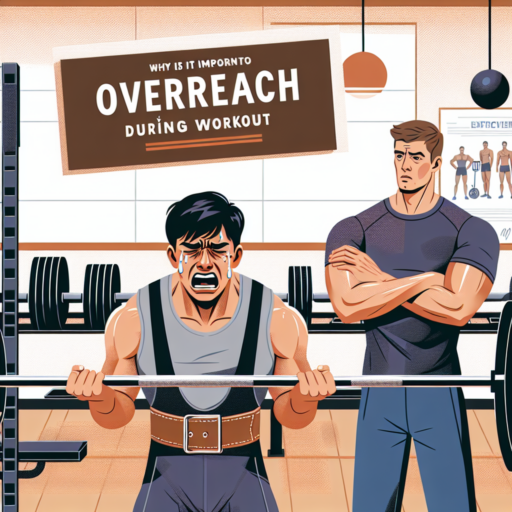What is a unilateral strength exercise?
Unilateral strength exercises are a type of strength training focused on working one side of the body at a time. Unlike bilateral exercises that engage both sides simultaneously, unilateral training emphasizes the muscles on one side, promoting muscle balance and coordination. This approach can significantly improve your performance in a variety of athletic disciplines and daily activities by targeting muscle imbalances and enhancing core stability.
One of the core benefits of unilateral training is its effectiveness in identifying and correcting asymmetries in strength and mobility. Many individuals unknowingly possess a dominant side, which can lead to discrepancies in muscle development and function. By incorporating unilateral strength exercises into your workout routine, you provide both sides of your body with equal opportunity to develop, thereby reducing the risk of injury and enhancing overall muscular harmony.
Another aspect of unilateral training is its impact on core stabilization and balance. When you perform exercises that focus on one side of the body, your core must work harder to maintain your balance. This engagement not only strengthens the muscles in the targeted limb but also improves core strength and posture. Common unilateral exercises include lunges, single-arm presses, and single-leg deadlifts, each designed to challenge and improve your body’s stability and strength on an individual basis.
Can you build muscle with unilateral exercises?
Unilateral exercises, which involve training one side of your body at a time, are often the underdogs of the fitness world. Despite their simplicity, these exercises pack a powerful punch in muscle building. By focusing on one limb or side at a time, unilateral exercises help in correcting imbalances, increasing muscle isolation, and enhancing muscle growth. The simple answer to whether you can build muscle with unilateral exercises is a resounding yes.
Increased Muscle Activation is one of the key benefits of unilateral training. When you perform an exercise one side at a time, the focus and isolation demand more from your muscles. This heightened activation not only improves your strength in that particular limb but also contributes to a more substantial overall muscular development. Exercises like the single-arm row or single-leg press require the engagement of additional stabilizer muscles, which play a significant role in building a stronger and more balanced physique.
Another aspect to consider is the Correction of Imbalances. Unilateral exercises are incredibly effective at identifying and correcting strength and muscular imbalances between the two sides of your body. These imbalances, if left unchecked, can lead to improper posture, uneven muscle development, and increased risk of injury. By incorporating unilateral exercises into your routine, you can ensure that both sides of your body are equally strong and capable, fostering a more symmetrical muscle growth.
What are the unilateral training methods?
Unilateral training methods refer to exercises that focus on training one side of the body at a time, as opposed to bilateral training which works both sides simultaneously. This approach is crucial for addressing imbalances, improving coordination, and enhancing athletic performance. By concentrating on single-limb exercises, individuals can identify and correct disparities in strength, flexibility, and muscular endurance between their body’s two sides.
Examples of Unilateral Training Exercises
- Single-Leg Deadlifts: Target the posterior chain muscles of one leg at a time, improving balance and core stability.
- Unilateral Presses: Such as single-arm shoulder presses or single-arm chest presses, which enhance upper body strength and stabilize shoulder muscles individually.
- Single-Leg Squats: These demand significant strength and balance, focusing intensely on the quadriceps and glutes of the working leg.
Incorporating unilateral training into your workout routine offers not just a way to balance out physical asymmetries but also introduces variety and challenge, keeping the body guessing and adapting. It’s particularly beneficial for athletes or individuals recovering from injury, as it allows for focused strengthening of one side while not overloading or relying too heavily on the stronger, uninjured side.
Unilateral exercises often require more concentration and balance than their bilateral counterparts, tapping into core strength and necessitating a heightened sense of body awareness. This unique aspect of unilateral training makes it not only effective for physical development but also for improving neuromuscular coordination, leading to better overall locomotion and physical performance. Through consistent practice, individuals can achieve a more symmetrical strength distribution and enhance their functional movements.
No se han encontrado productos.
What are unilateral strength exercises for biceps?
Unilateral strength exercises for biceps focus on isolating and training each arm independently, rather than using both arms simultaneously as in traditional bicep workouts. This approach helps in correcting muscle imbalances, enhancing muscle coordination, and increasing the intensity of the workout for each arm. By concentrating on one arm at a time, individuals can ensure that both biceps receive equal work, leading to more symmetrical strength and muscle development.
Types of Unilateral Bicep Exercises
- Single-Arm Dumbbell Curls: A cornerstone of unilateral bicep training, this exercise allows for focused tension on each bicep individually, promoting balanced strength and size.
- Concentration Curls: Performed seated, with the elbow resting on the inside of the thigh, this exercise prevents momentum usage and ensures that the bicep does the heavy lifting.
- Hammer Curls with One Arm: By targeting the bicep along with the brachialis, this variant adds diversity to the routine and fosters comprehensive upper arm development.
Integrating unilateral exercises into your bicep routine can be a game-changer, especially for those looking to overcome a plateau or enhance muscle definition. Since each arm works independently, these exercises demand greater stability and core strength, offering an added benefit of engaging the core muscles throughout the workout. Remember, focusing on form and technique is paramount to reaping the benefits of unilateral training and preventing injury.




